
This inquiry kit features Library of Congress sources and focuses on four of Abraham Lincoln's key speeches.
- Subject:
- Social Science
- Material Type:
- Primary Source
- Provider:
- PBS Learning Media
- Date Added:
- 03/22/2024

This inquiry kit features Library of Congress sources and focuses on four of Abraham Lincoln's key speeches.

In this lesson, students will investigate the connection between the popularity of Heavy Metal and the emergence of the parental advisory system. They will consider who should have the power to declare a song "offensive" and whether or not access to such material should be regulated. They will further debate the merits of the labeling system, which is still in place, and consider whether or not labeling certain recordings should be considered censorship.

Engaging, teacher-created lesson plans on the Constitutional Convention, Freedom of Speech, 4th Amendment, Electoral College, Federalist and Federalism, more.
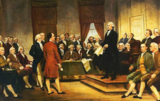
This activity is designed to help students understand the debates at the Constitutional Convention in 1787 that shaped America’s legislative branch of government. The primary goal of this activity is for students to discover how a compromise balanced the needs of large states and small states and how this led to the creation of the current House of Representatives and Senate.
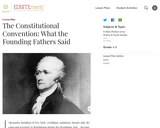
To what shared principles did the Founding Fathers appeal as they struggled to reach a compromise in the Constitutional Convention? In this lesson, students will learn how the Founding Fathers debated then resolved their differences in the Constitution. Learn through their own words how the Founding Fathers created"a model of cooperative statesmanship and the art of compromise."
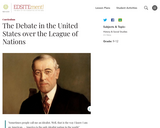
American foreign policy continues to resonate with the issues surrounding the debate over U.S. entry into the League of Nations-collective security versus national sovereignty, idealism versus pragmatism, the responsibilities of powerful nations, the use of force to accomplish idealistic goals, the idea of America. Understanding the debate over the League and the consequences of its ultimate failure provides insight into international affairs in the years since the end of the Great War.
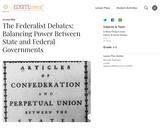
This lesson focuses on the debates among the U.S. Founders surrounding the distribution of power between states and the federal government. Students learn about the pros and cons of state sovereignty vs. federalism and have the opportunity to argue different sides of the issue.
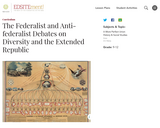
This curriculum unit explores some of the most important arguments of those opposing or supporting the ratification of the U.S. Constitution.

Students explore what it means to speak out for your beliefs, or to right a wrong. After watching a short video, they will reflect on Douglass’s courage and the importance of literacy in his activism. They will read excerpts from Douglass’s autobiographies and examine an 1850 etching of Douglass being pulled away from a stage prior to giving a speech. Finally, they will reflect on Douglass’s importance as both a historical figure and as a role model for their own lives.

In this resource, students will engage with video clips that introduce students to the Gettysburg Address, highlight students of The Greenwood School analyzing the speech, and discuss the road to the Battle of Gettysburg and its impact on the war. Students will interact with these videos to learn about the Battle of Gettysburg and the significance of the Gettysburg Address. After viewing the curated clips, students will craft their own presentations analyzing the historical significance of a specific section of the Gettysburg Address with the goal of explaining to their peers what this section meant and why it is important.

A recording and transcript of Martin Luther King Jr.'s celebrated "I Have a Dream" speech, delivered on Aug. 28, 1963, on the steps of the Lincoln Memorial.

The goal of this inquiry is to help students develop their thinking in terms of continuity and change through learning about US immigration policy actions and their effects over time. By examining whether there is anything new about current immigration policy debates, students compare and contrast the discourse around immigration at three key moments in US history—the passage of the Chinese Exclusion Act of 1882, the Immigration Act of 1924, and the Immigration Act of 1965—with the current immigration policy. Students need to develop a deep understanding of each of the three policies in order to write a thoughtful argument that analyzes continuities and changes in perceptions of and policies regarding immigration throughout the post–Civil War period of US history

The goal of this inquiry is help students understand the central debate about the government’s role in fostering economic opportunity over the past half century. As this is a historical inquiry, it focuses on the motivations, actions, and impacts of two particular US presidents: Lyndon Johnson and Ronald Reagan. Their economic programs stand in for the larger argument that persists today between liberal and conservative approaches to federal economic policy. Thus, the compelling question “How should the president foster economic opportunity?” is intentionally timeless to emphasize its relevance today. Students look at Johnson’s and Reagan’s visions for the economy, the policies they advanced to achieve their visions, and modern interpretations of each president’s legacy.
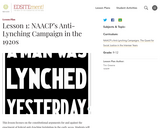
This lesson focuses on the constitutional arguments for and against the enactment of federal anti-lynching legislation in the early 1920s. Students will participate in a simulation game that enacts a fictitious Senate debate of the Dyer Anti-Lynching Bill. As a result of completing this activity, students will gain a better understanding of the federal system, the legislative process, and the difficulties social justice advocates encountered.
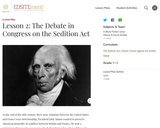
What provisions in the U.S. Constitution are relevant to the debate over the Sedition Act? For this lesson, students will read brief excerpts from actual debates in the House of Representatives as the legislators attempted to work with the version of the bill "Punishment of Crime" (later known as the Sedition Act) already passed by the Senate.
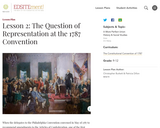
When the delegates to the Philadelphia Convention convened in May of 1787 to recommend amendments to the Articles of Confederation, one of the first issues they addressed was the plan for representation in Congress. This lesson will focus on the various plans for representation debated during the Constitutional Convention of 1787.
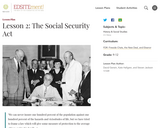
This lesson engages students in the debate over the Social Security Act that engrossed the nation during the 1930s.
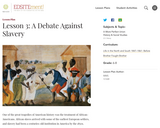
Sometimes, people will fight to keep someone else from being treated poorly. Disagreement over slavery was central to the conflict between the North and the South. The nation was deeply divided.
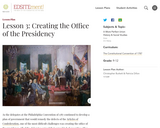
As the delegates at the Philadelphia Convention of 1787 continued to develop a plan of government that would remedy the defects of the Articles of Confederation, one of the most difficult challenges was creating the office of the presidency. This lesson will focus on the arguments over the various characteristics and powers of the office of president as debated during the Constitutional Convention of 1787.
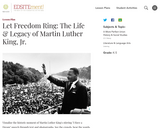
Students listen to a biography of Martin Luther King, Jr., view photographs of the March on Washington, and study King's use of imagery and allusion in his "I Have a Dream" speech.